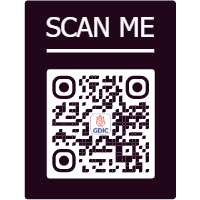This blog delves into why your doctor might recommend a PET CT scan for conditions like cancer, heart ailments, and brain disorders, along with essential information on preparation and the scanning process.
Introduction
PET or positron emission tomography scan is a most useful imaging diagnostic tool that gives excellent information on the metabolic or biochemical function of the organs and tissues of an individual human body. A PET scan reflects normal and abnormal metabolism by employing the use of a radioactive medication named a tracer.
The tracer is typically injected into a patient's vein in the arm or hand. Then, the tracer accumulates in regions of the patient's body that exhibit increased levels of metabolic or biochemical activity. Thus, this is an indication and it tends to identify the precise location of the disease. The PET images are typically combined with CT or MRI and hence they are referred to as PET-CT or PET-MRI scans.
Here we shall get into the nitty-gritty of a PET-CT scan:
Why did your doctor recommend you have PET CT scans?
PET CT scan is extremely useful and a good diagnostic tool for the medical community. It is an excellent method to identify a number of conditions like cancer, heart ailments, and brain disorders.
The physicians utilize these findings and make interpretations on the basis of this information to diagnose, monitor or treat a patient's condition.
Cancer
In PET scans cancer cells are identified as light spots since they have a greater metabolic rate compared to normal cells. Therefore, PET scans can be useful in:
- Diagnosing cancer.
- To determine whether there is cancer spreading.
- To determine whether the cancer treatment is effective.
- To identify a cancer recurrence.
It is also important to note that PET scans have to be interpreted very cautiously because noncancerous conditions look similar to cancer as well. Additionally, certain cancers might not even show up on PET scans. It is with PET CT scans that a lot of types of solid tumors can be seen, including:
- Cervical
- Brain
- Breast
- Colorectal
- Head and neck
- Esophageal
- Lymphatic system
- Lung
- Prostate
- Pancreatic
- Thyroid
- Skin
- Heart disease, etc.
PET scans are able to reveal areas that have reduced blood flow in the heart. This data is crucial in assisting a patient and the physician to make the kind of follow-up intervention.
Brain disorders
PET scans are also useful in diagnosing some brain diseases, such as tumors, Alzheimer's, and seizures.
What are the preparations needed to get a PET can?
The patient must be honest to the doctor and he or she should reveal everything to the doctor. The patient should speak candidly with the doctor and let him or her know everything including the following:
- Whether the patient experienced any negative allergic reaction previously.
- If the patient has recently been ill or has another condition, for instance, diabetes.
- If they have been on any medications, herbs, or supplements.
- If one is pregnant or might be questioning being pregnant.
- If one is lactating.
- If a patient suffers from claustrophobia and is afraid of small places.
Other PET CT Scans tests that are done at Ganesh Diagnostic-
- Brain PET Scan (Book Now)
- F-18 Choline PET Scan (Book Now)
- FDG-PET Scan (Book Now)
- DOTA PET CT Scan (Book Now)
- PET Viability Scan Cardiac (Book Now)
What to expect during a PET scan?
The PET-CT scanner employs a huge machine, which looks like a giant doughnut standing upright, and they are similar to CT or MRI scanners.
The entire process of a PET CT scan is done in approximately two hours and it does not require in-patient needs. A patient does not need to spend the night in a hospital for the PET-CT scan.
Upon reaching the facility or hospital, a patient can be basked with things such as being changed into a gown offered by the hospital. Therefore, if you were inquiring about what to wear for a PET scan, it is always loose clothing, which is primarily offered by the facility.
The bladder is to be emptied by the patient. Then, one of the evaluation staff, a technician, will inject the tracer into a patient's arm or hand vein. The patient will be able to feel a momentary cold sensation traveling up the arm. Next, the patient will have to remain still in a reclining chair for 30 minutes to an hour so that the body absorbs the tracer.
What is the process of PET CT scan?
After all the initial formalities and preparations have been completed satisfactorily, the patient is ready for the PET CT scan.
- The patient needs to lie down on a narrow, padded examination table that is inserted into the scanner, which is in the form of a doughnut hole.
- The patient must keep still, which will ensure that the images are crystal clear and not blurred.
- It takes half an hour for the full PET-CT scan whereas it takes 45 minutes for PET-MRI scan. The patient should be informed beforehand that the PET CT scan machine will produce buzzing and clicking noises.
- The test is not painful, but if the patient suffers from claustrophobia, then he or she might feel uncomfortable while being within the scanner.
- This is nothing to fear. The patient should reveal being anxious in enclosed spaces so that the doctor could administer an anxiety drug to soothe the nerves and put the patient in a relaxed mood.
Please note that the patient should take any drug that the doctor prescribed only. The technicians might not be qualified to prescribe any medication.
What to do after a PET CT scan?
After the PET CT scan is completed the patient is free to go about the daily activities as normally as possible. It is only when the doctor advises otherwise there is nothing out of the ordinary a patient needs to do following a PET CT scan. The patient should also consume lots of water or fluids so that the tracer is eliminated from the body.
After care of PET Scan
Once the scan is complete, a radiologist shall take charge of proceedings. A radiologist is a trained specialist who reads the scan images. He or she will then present the findings to the patient's concerned or consulting physician.
The radiologist will most likely compare the patient's PET images to images from some of the other tests that he or she has recently undergone, such as an MRI or CT. The radiologist will also overlay the PET images in order to give more information on the patient's current status. The final report is then sent to the doctor, once the interpretation is done, and he or she goes ahead and takes the next intervention steps accordingly.
Conclusion
Thus, we have observed that a PET CT scan is a valuable imaging modality to diagnose a variety of life-threatening diseases and assist the physician to formulate efficient treatment strategies for the patient. A patient must strictly follow the guidelines given by the physician to obtain precise and detailed results for an improved treatment.
FAQs
Q. What is the full form of PET CT Scan?
The full form of PET CT scan is Positron Emission Tomography scan, and CT means Compute Tomography scan.
Q. What is not to be done prior to a PET scan?
A patient needs to avoid exercising 24 hours prior to the PET CT scan and must have a special diet between 12 and 24 hours as advised by the physician before the scan.
Q. What preparation is necessary for a PET scan?
No food or beverage should be consumed, except for water, six hours prior to the PET CT scan. The patient may drink as much water as he or she can, as it would be beneficial, until the arrival. Routine medications are permissible but it should be discussed before with the doctor.
Q. What is the cost of PET CT Scan in Delhi, NCR?
The cost of PET CT Scan in Delhi NCR ranges between 10,000 rs to 15,000 rs and it also depends on the costs affecting factors. You can book this test at Ganesh Diagnostic and Imaging Centre, one of the best imaging centre for pet ct scan in Delhi, ncr.
Q. What is not to be done after a PET scan?
Following a PET scan, a patient can be instructed not to approach a pregnant woman and remain in close proximity for an extended period. One should also not approach babies or small children closer for several hours following a PET scan. This is due to the fact that the patient may still be radioactive at this time.
Q. What is the disadvantage of a PET scan?
There can be one or two PET scan disadvantages, PET scans may give false findings sometimes, particularly when the body's chemical balance is not as it should be.









